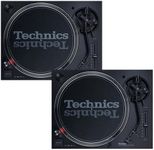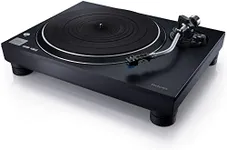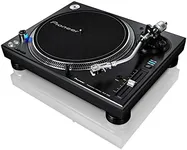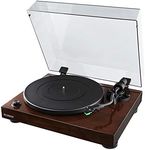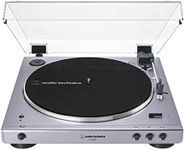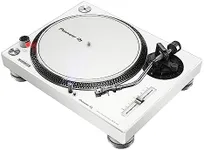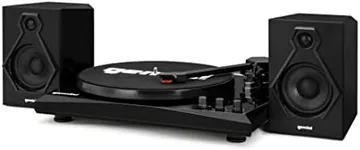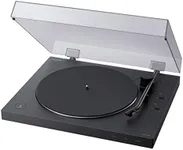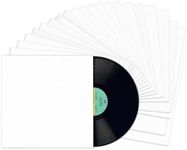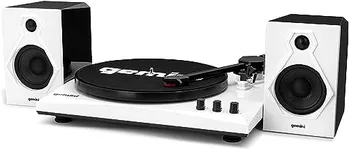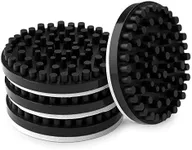Buying Guide for the Best Automatic Turntables
Choosing the right automatic turntable can greatly enhance your music listening experience. Automatic turntables are designed to make playing records easier by automatically placing the needle on the record and lifting it off when the record is finished. When selecting an automatic turntable, it's important to consider several key specifications to ensure you get the best fit for your needs. Understanding these specs will help you make an informed decision and enjoy your vinyl collection to the fullest.Drive TypeThe drive type of a turntable refers to how the platter is powered. There are two main types: belt-drive and direct-drive. Belt-drive turntables use an elastic belt to spin the platter, which helps reduce motor noise and vibration, making them ideal for home listening. Direct-drive turntables have the motor directly connected to the platter, providing more consistent speed and torque, which is preferred by DJs for scratching and mixing. If you are a casual listener, a belt-drive turntable might be the best choice for its sound quality. If you plan to use the turntable for DJing, a direct-drive model would be more suitable.
Cartridge TypeThe cartridge is the component that holds the needle (stylus) and converts the grooves on the record into an audio signal. There are two main types: moving magnet (MM) and moving coil (MC). MM cartridges are more common, easier to replace, and generally more affordable, making them a good choice for most users. MC cartridges are typically more expensive and offer higher fidelity sound, which might appeal to audiophiles. Consider how much you value sound quality and how often you might need to replace the cartridge when making your choice.
Built-in PreampA preamp boosts the audio signal from the turntable to a level that can be played through speakers. Some turntables come with a built-in preamp, while others require an external one. A built-in preamp simplifies setup and is convenient for beginners or those with limited space. However, external preamps can offer better sound quality and more customization options. If you are new to turntables or want a straightforward setup, a built-in preamp is a good feature to look for. If you are more experienced or want to fine-tune your audio setup, you might prefer a turntable without a built-in preamp.
Speed SettingsTurntables typically support different speed settings to play various types of records. The most common speeds are 33 1/3 RPM (revolutions per minute) for LPs and 45 RPM for singles. Some turntables also support 78 RPM for older records. It's important to choose a turntable that supports the speeds of the records you own. If you have a diverse collection, look for a model that offers all three speeds. If you primarily listen to modern LPs and singles, a turntable with just 33 1/3 and 45 RPM settings will suffice.
Build QualityThe build quality of a turntable affects its durability and sound performance. Look for a turntable with a solid, heavy base (plinth) to minimize vibrations and improve sound quality. Materials like wood, metal, and high-quality plastics are preferable. A well-built tonearm and platter also contribute to better performance and longevity. If you plan to use your turntable frequently or want it to last for many years, investing in a model with good build quality is important. For occasional use, a lighter, more affordable model might be sufficient.
Automatic FeaturesAutomatic turntables offer features like auto-start, auto-stop, and auto-return, which make playing records more convenient. These features are especially useful for beginners or those who prefer a hassle-free listening experience. Auto-start places the needle on the record at the beginning, auto-stop lifts the needle at the end, and auto-return brings the tonearm back to its resting position. If you value convenience and ease of use, look for a turntable with these automatic features. If you prefer a more hands-on approach, a manual turntable might be more appealing.
